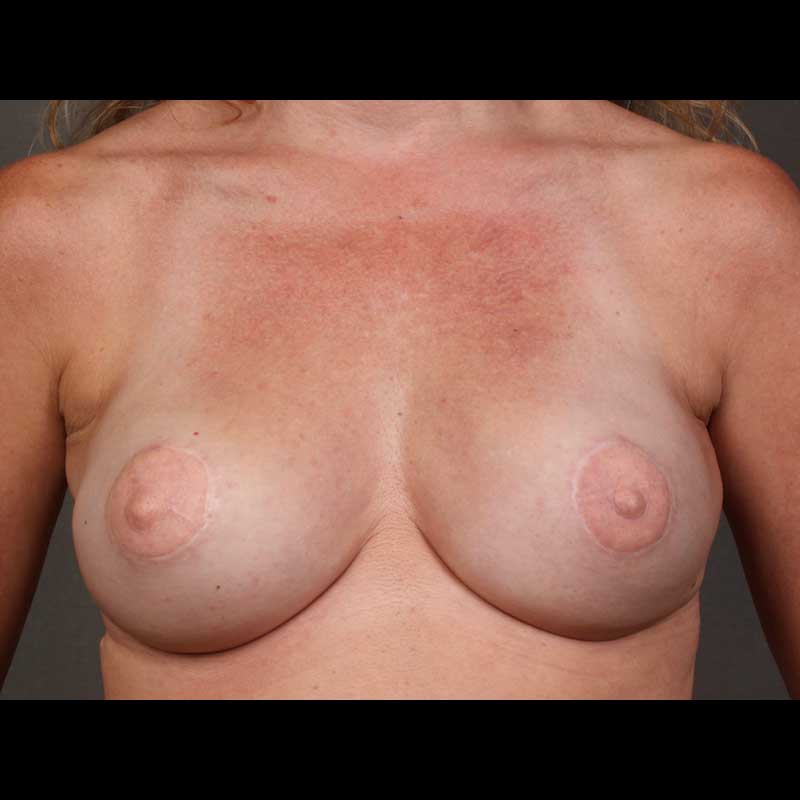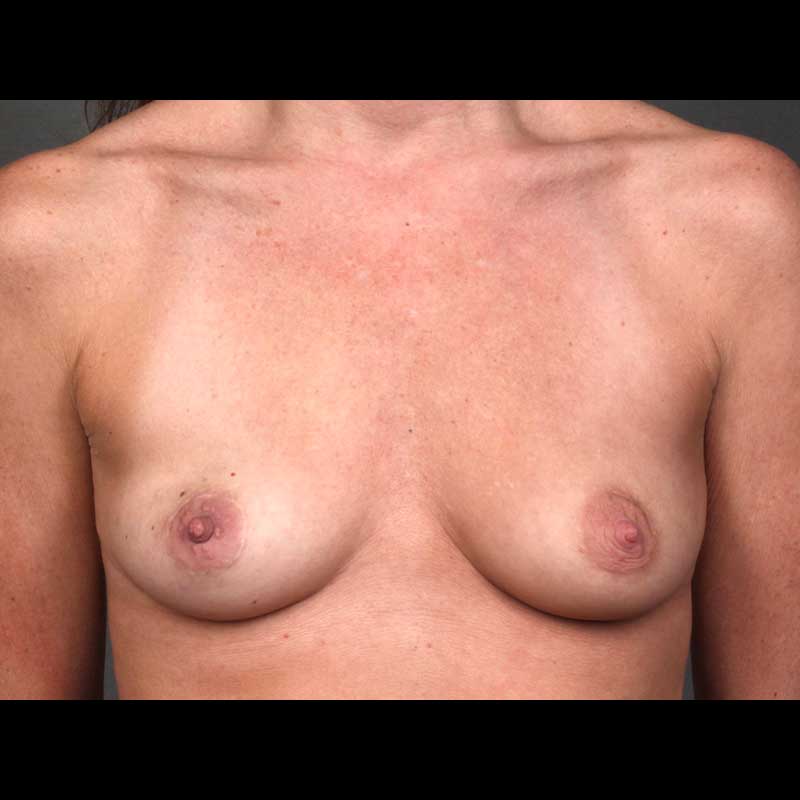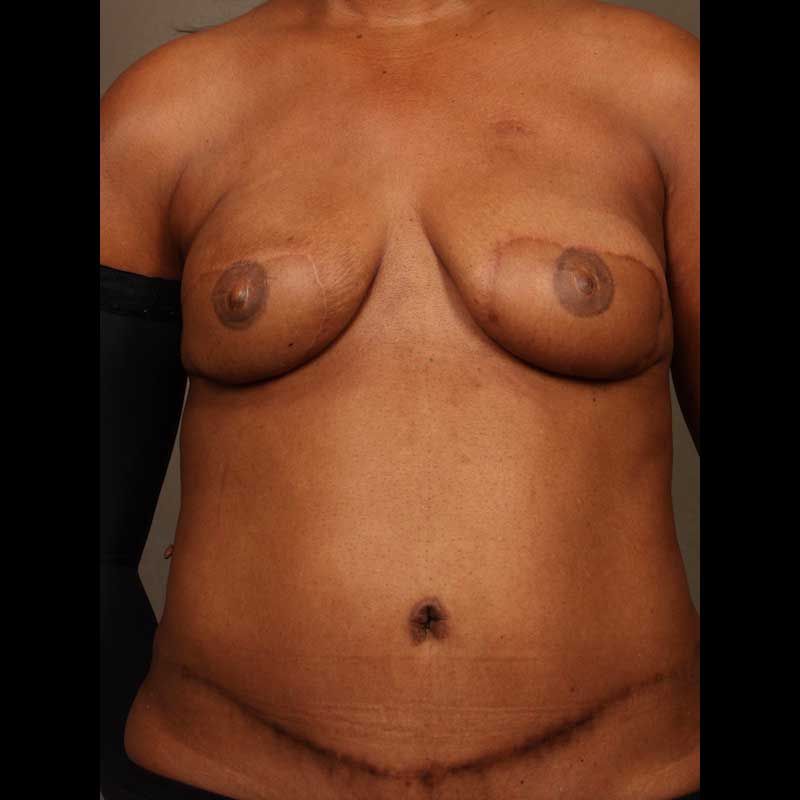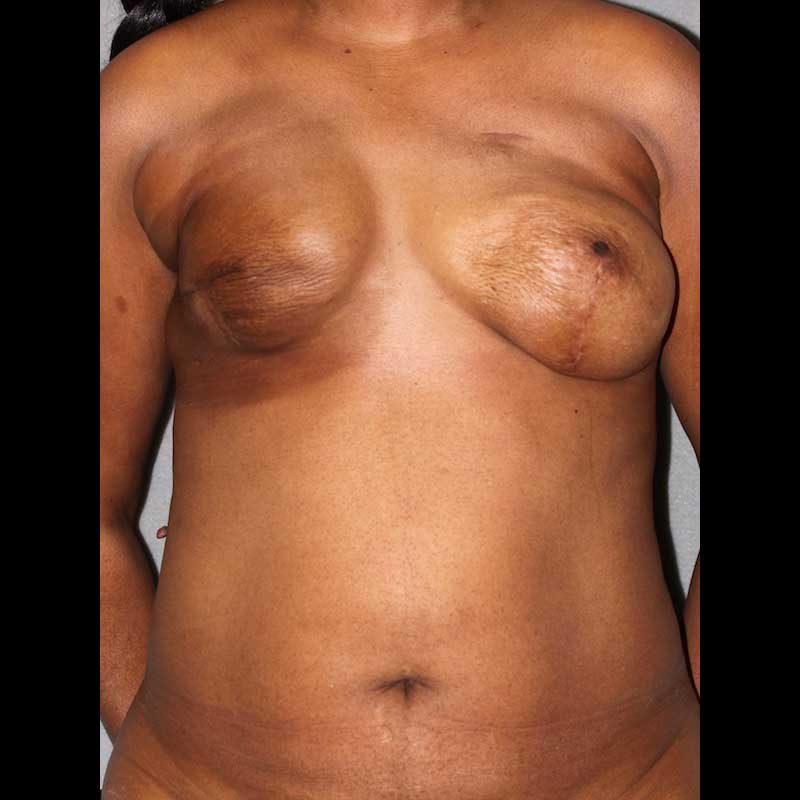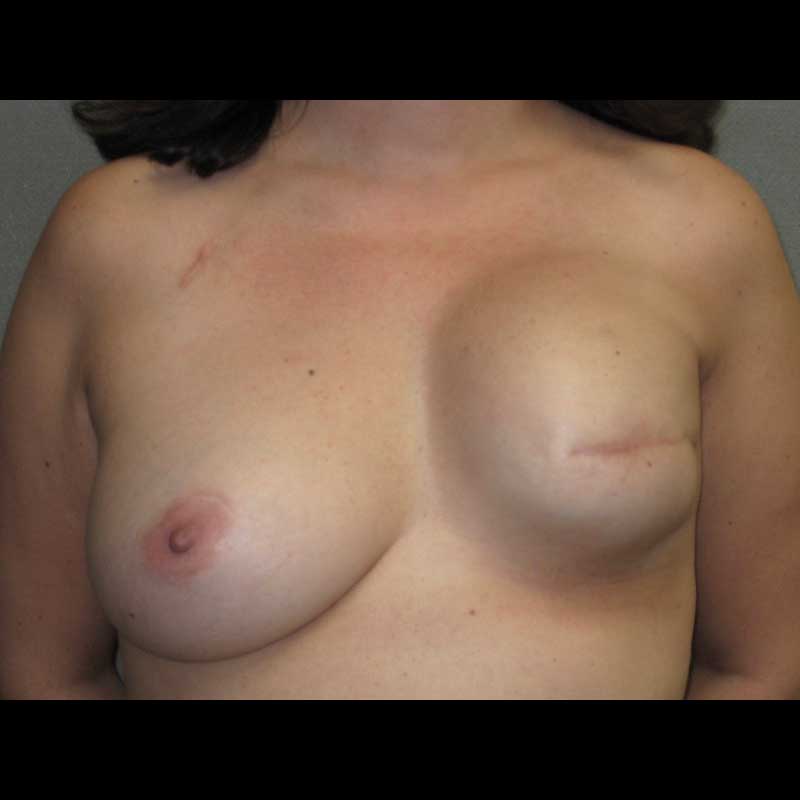Summary
Radiation therapy can be a very effective element of breast cancer treatment, particularly among patients undergoing breast conserving therapy with lumpectomy. While lumpectomy removes the cancer, radiation treats the remaining breast tissue. Radiation may also be required for patients with multiple positive lymph nodes, or to manage a recurrent breast cancer.
Unfortunately, when radiation is used to treat breast cancer, healthy breast skin and surrounding tissue can be damaged. Injury to normal skin from radiation can increase the risk of complications after breast surgery, including the risk of infection and wound healing problems. After breast reconstruction with implants, long term potential complications include implant malposition and tightness due to painful capsular contracture. In severe cases, implant extrusion can occur. Because of the risks associated with implants, natural-tissue flap reconstruction techniques are preferred for patients treated with prior radiation.
If you need radiation as a part of your treatment, your breast reconstruction timing and approach will be coordinated with your breast surgeon and radiation oncologist. Should problems arise, there are a number of surgical options that can help mitigate and correct radiation related complications
Types of procedures
- Fat Grafting: this technique can frequently correct radiation damage to skin and soft tissue. Improvements after fat grafting may take a few months to become evident and may require more than one fat grafting procedure. Fat grafting can be effective after lumpectomy and radiation or following mastectomy and breast reconstruction.
- Revision of Radiated Implant Breast Reconstruction: In some cases, implant problems related to radiation may be improved with removal of a tight capsule followed by soft tissue reinforcement using a dermal matrix. When radiation related capsular contracture and tightness is severe, implant removal may be needed. This can be followed by immediate or delayed natural-tissue flap breast reconstruction if desired.
- Revision of Radiated Flap Breast Reconstruction: This may require scar revision, removal of fat necrosis, and possible fat grafting.
Procedure details
- For radiation related damage after lumpectomy, staged fat grafting may improve outcomes and can be done as outpatient surgery
- If radiation is anticipated after mastectomy, the breast reconstruction approach should take the timing and potential effects of the radiation into consideration
- Depending on the timing of radiation, your team may decide to place a temporary tissue expander at the time of mastectomy, followed by final reconstruction with a natural-tissue flap as part of a staged surgical plan
- When mild radiation changes are present in a reconstructed breast, outpatient revision procedures, including fat grafting, may help
- Severe radiation damage typically requires corrective surgery with natural-tissue flap reconstruction
Risks & Benefits
Radiation to the breast can permanently damage healthy skin. This can make breast reconstruction much more difficult. In spite of this, with proper planning, quality breast reconstruction can be achieved in most patients.
The surgeons at NYBRA Plastic Surgery are experienced with the full range of breast reconstruction procedures. If you are facing mastectomy and reconstruction and you need radiation, we can help you plan your breast reconstruction in a way that will minimize the potential damaging effects of radiation. Similarly, if you have an unfavorable outcome related to breast reconstruction on tissue treated with radiation, we can help you determine the best possible approach to improve your breast reconstruction.
Frequently Asked Questions
Can I have nipple reconstruction if I had radiation treatment after breast reconstruction?
Nipple reconstruction after radiation can be very difficult. There is a high risk of healing problems and potential flattening of the reconstructed nipple. In many cases, a three-dimensional tattoo is a better option.
